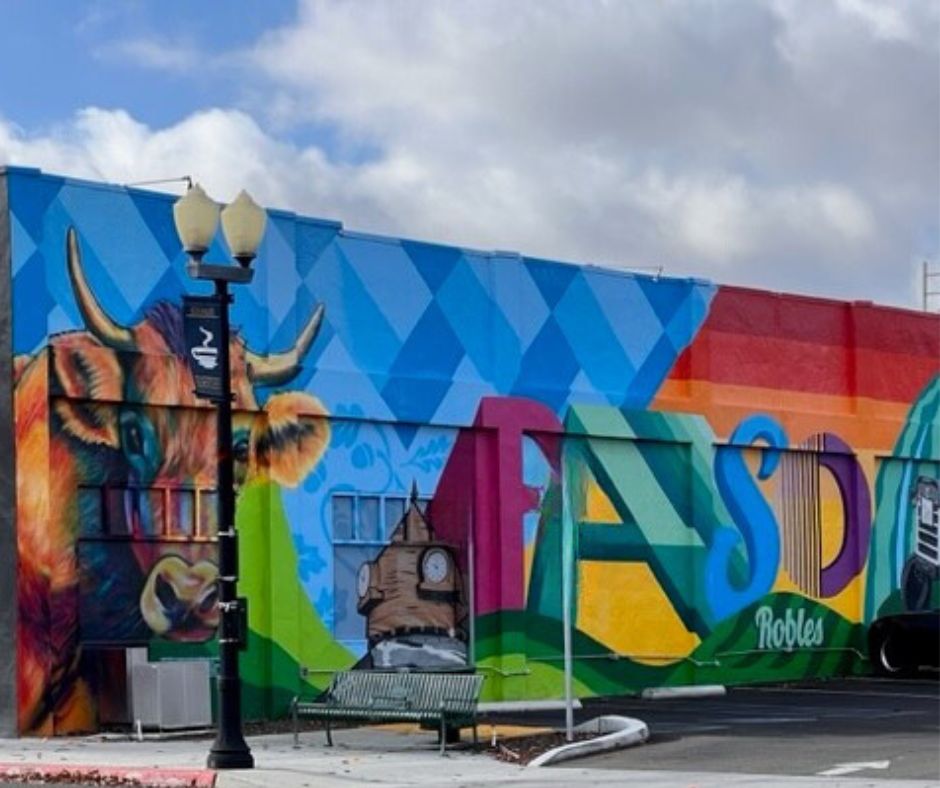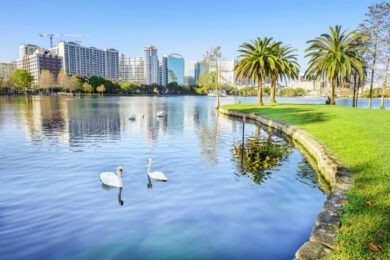A quest to find sustainable event experts leads to an emerging wine region in California’s Central Coast
It’s not your imagination. The quest to design green meetings often feels like a greenhouse gas-cutting limbo game. At first, it was enough to do away with plastic straws to save the turtles. Then the bar was set on removing single-use plastic bottles in favor of branded, refillable jugs. That was the slippery slope to carpet-free expo halls, plant-based meals and carbon-neutral lanyards—all measured and reported to show “return on environment” (ROE). Finding destinations, hotels and convention centers that had taken the steps to earn LEED certification was the new gold standard in sourcing partnerships. All of these are laudable steps in a world that is getting hotter and impacted by more extreme weather events every year. This is more than a sustainability moment for meetings. Green meetings are here to stay. But when the phrase “regenerative meetings” started getting tossed around, we were curious if that was even possible.
The term “regenerative” when applied to the environment goes beyond reducing harm and extends to actively restoring and revitalizing natural systems by addressing all inputs and downstream impacts.
Read More: Best of Sustainability stories
The idea of designing events that require people to fly on an airplane to a location, house and feed them, produce a show that is impactful enough that they will remember, tell their friends and, ideally, return the next year, while not just minimizing environmental impacts, but leaving the world better seemed daunting. How do we consider the entire event ecosystem and find ways to incorporate restorative processes into our agendas to elevate the people and places we touch?
We decided to see for ourselves with a quick trip two-and-a-half hours south of Silicon Valley to the emerging wine and tourism region of Paso Robles where green seems to be the official color.
A Heart for Tourism
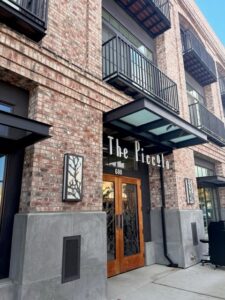
El Paso de Robles or “Pass of the Oaks” is a city of about 32,000 people in San Luis Obispo County, halfway between San Francisco and Los Angeles. Legend has it that the town was founded by Jesse James’ uncle in 1869. Food & Wine called the region the “Wild West” when it comes to wine production because of the creative approach to growing and blending.
Paso, as the locals call it, sits at the crossroads of highways 101 and 46 and the rolling hills are about a half hour from the Pacific Ocean and Cal Poly’s robust viticulture program. Tourism is a major economic engine as Golden State road trippers and international visitors alike are discovering the charm of the little downtown square, the laid-back vibe and the quality of the wines, culinary scene and venues. Heck, the city is home to five Michelin-ranked restaurants—In Bloom, Six Test Kitchen, The Restaurant at JUSTIN, The Hatch and Les Petites Canailles. That has to be a per-capita record of some sort. It also boasts creative cocktails at Cane Tiki Room, Eleven Twenty-Two Speakeasy & Cocktail Lounge, Pappy McGregor’s Gastropub and Fish Gaucho, all owned by cousins Troy Larkin and Donovan Schmit. Cheers to more than 150 tequila and mezcal choices and locking up your phone to make conversations with strangers more likely.
Read More: California’s Central Coast is Open for Business
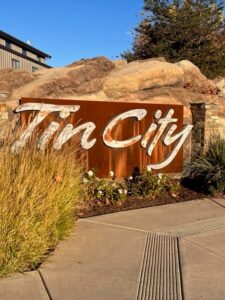
Tin City, an industrial park that doubles as a hub for tasting rooms boasts more than 20 craft producers in a four-block, walkable area. It also features fun breweries such as BarrelHouse Brewing Co. and distilleries such as Wine Shine, which repurposes grape juice from local vineyards to make award-winning brandies.
Stacie Jacob, president and CEO of Travel Paso, reported that transient occupancy taxes totaled $9.8 million in 2022. “Our diverse ecosystem of businesses, including wineries, distilleries, breweries, restaurants, art galleries and retail, keep guests coming back. Once a visitor discovers Paso, they return, which supports our local economy and creates a quality of life for all residents to enjoy,” she said. She continued: “Travel is at the heart of our region, powering a strong economy and strengthening our community’s culture and identity.”
A Wine Revolution
Anyone who has stared down the shelves at a grocery store wine wall will recognize Paso Robles staples such as J. Lohr Vineyards & Wines, JUSTIN Vineyards & Winery, Robert Hall Winery and perhaps even DAOU Family Estates (recently purchased by Treasury Wine Estates for $1 billion). More than 200 wineries dot the diverse soils, elevations and conditions that make up the 11 sub-American Viticultural Areas of Paso Robles AVA, many with small productions of unique grape varieties such as Lagrein, Picpoul in addition to Cabernet Sauvignon and Bordeaux-style varieties.
Read More: California Wine Country Updates
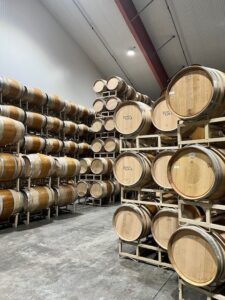
Due, in part, to the pervasive maverick spirit, the presence of all those Cal Poly enology grads and the reality of farming in an area where water supply can be sketchy, vintners of all sizes have pioneered organic and biodynamic practices.
A popular grape-to-glass group tour of the winemaking operation at Robert Hall Winery demonstrates the sustainable steps taken from organic farming practices to minimizing waste materials during the fermenting process in the underground cavern. An experimental program called BioFiltro will employ worm digestive power to filter and recycle wastewater while using castings as a natural soil amendment. Yes, little red wigglers are part of the environmental plan. An e-bike vineyard tour offers a close-up of the biodynamic regenerative viticulture living case study being conducted to compare and contrast farming methods. It ends at the 2,000-square-foot, wood-beamed event room surrounded by patio terraces looking out over the vines.
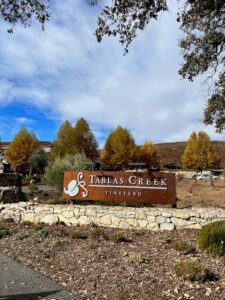
Asked about the source of the sustainable winemaking movement in the area, Grey Wolf Cellars and Barton Family Wines General Manager (and former fleet director of food and beverage operations with Princess Cruises), shrugged and said, when one day nothing happens when you turn on the faucet, that is a sign that dry farming just makes sense. Some say the practice of relying on rainwater management rather than irrigation actually results in more flavor-packed fruit. Barton Family second-generation owner, director of winemaking and Cal Poly grad Joe Barton, Jr., expanded the operation to include a food program and event space that has been used to support local community functions, including MUST! Charities for youth mentorship, poverty and hunger. His commitment to giving back to the community where he is raising his family is another example of that regenerative approach to business.
Read More: How Sustainability and CSR are Entwined at Marriott
When it comes to regenerative wine practices, the road literally leads to Tablas Creek Vineyard, which sits at the end of windy, tasting-room-lined Adelaida Road. Actually, the earth-friendly story starts much earlier than when the winery was established in 1987. The roots came from the Perrin family that started Château de Beaucastel in France in 1909 and Jacques Perrin pioneered organic farming there in the 1950s. Wine legend Robert Haas imported those fabled wines to the United States and eventually worked with the family to bring Mourvedre, Roussanne, Viognier, Marsanne and other rootstocks to start a winery in an area of California that mirrored the climate and soil conditions of Châteauneuf-du-Pape. Robert’s son, Jason Haas is now partner and general manager, leading the charge that distinguished Tablas Creek the first Regenerative Organic Certified vineyard in the world in 2020. The Regenerative Organic Alliance, which grants the certification, describes regenerative farming as an operation that “respects land, animals, empowers people and restores communities and ecosystems.” Some 15 wineries around the world now claim the distinction.
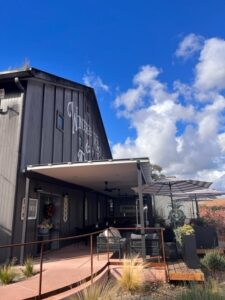
What sets the practice apart from traditional organic and biodynamic practices is a holistic approach. Haas shared his philosophy on his blog by breaking the effort into four buckets. The first step is to build healthy soils rich in organic matter by including cover crops, grazing animals, compost, biochar (carbon from wood chips, plant residue, manure and other agricultural waste) and employing minimal tilling. The goal is to use natural solutions for pests, weeds and fertility. Water and energy are conserved as much as possible by employing dry-farming methods, steam cleaning, diverting wastewater to a wetland habitat and installing solar panels to capture the abundant sunshine. Haas also hyper-focused on the impact of packaging and shipping choices—something meeting professionals have some control over in the run-up to events. More than half of the carbon footprint of the average California winery comes from making and shipping bottles of wine. Tablas Crrek has shifted to lightweight bottles, kegs for wholesale and tasting room purposes and now, boxed wine!
Visitors to the tasting room may learn another part of his approach to regenerative operations. Tablas Creek invests in employees by paying living wages with retirement benefits and ongoing training. Haas saw the practice as a logical extension of the care taken with the rest of the operation since they are, “the team that has their boots on the ground and their hands on the vines.”
Finally, Haas calls for spreading the word about regenerative practices. “We want to be the pebble that starts an avalanche,” Haas said.
Regenerative Hospitality
Biodynamic farming may be well and good for an agricultural enterprise like growing grapes, but how does that translate into meeting spaces? In Paso Robles, everything is integrated.
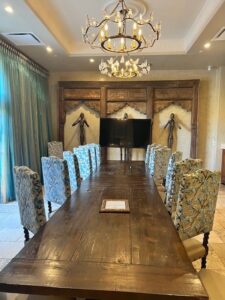
Consider Mediterranean-styled Allegretto Vineyard Resort by Ayres, which includes 35,000 sq. ft. of meeting space, 171 generously sized and furnished guest rooms, a winery tasting room, a chapel and an acclaimed restaurant that is also a favorite for locals. Fourth-generation hotelier Douglas Ayres has filled the property with his favorite art from around the world, references to music in the name of the property (a term meaning to play moderately fast) and the shape of a sound labyrinth (you have to experience it to understand). He was a cello player and the restaurant masterminded by Executive Chef Jeremy Fike bears the instrument’s name. The property also incorporates spirituality. The exquisite gold and blue boardroom is named after Ayres’ son, Dylan, who died in a car accident at the age of 15. The Spa, too, takes a holistic approach to wellness with Chara fitness classes and poolside cabana massages. Events in the Tuscan-inspired Veneto Ballroom and Conference Center often flow out into the courtyard to end the evening in wine barrel chairs by the firepit.
Read More: Free Meditation Apps for Event Planners on the Go
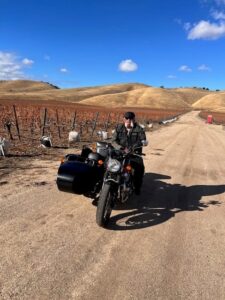
That same blending of business and pleasure happens at Cass Winery, where the family-owned 145 acres is billed as French DNA + Paso Personality. The property is also home to a new Barrel Room event space for 200 situated in the oak trees and eight boutique guest rooms as part of Geneseo Inn, a retreat that includes Cass Farmhouse Experience with three bedrooms and a full kitchen. At this bed and breakfast (local gourmet fare is brought up from the on-site cafe), there is not a ruffle in sight. The modern, amenity-filled rooms are snugged into industrial shipping crates, a feature ubiquitous to winery life. Also natural to the landscape, the addition of Camp Cass, run by head counselor Chase Aldrete, who leads groups through archery, axe-throwing and wine-blending activations in the midst of the vineyard. Horseback and Third Wheel Tours in motorcycle sidecars allow guests to explore the operation in style.
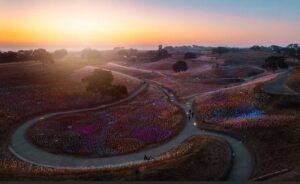
Need another glowing example? A recent addition to the landscape is Sensorio Field of Light, 15 acres of a former turkey ranch that has been transformed into nightly programmed art light shows. Built into the rolling hills is The Terrace Club where groups can listen to bands from a new stage, enjoy customized menus from Mercado restaurant and adjacent Airstream trailers while watching the landscape come to life. The newest addition coming to the site, DIMENSIONS, will be an interactive experience inviting guests to walk thought the oversized geometric art exhibit.
Meeting Prof Action Items
What can meeting professionals take from this exploration of a place that organically draws on its gritty past to build a future that is richer, healthier and more inclusive by nurturing a taste for unique characters and fresh ideas? We came up with this short list but we encourage you to add your own spin.
Start With Your Root Stock: What makes your event and the community that attends it unique? How can you amplify your distinctive features by giving a voice to your thought leaders at your event or between events?
Take Stock: List everything that will be required to pull off the event from signage and swag to food and flowers and consider how you can either limit, repurpose/reuse or source smarter. What is already in the destination that you can embrace and share with attendees? What can you bring to leave behind that will be seen as valuable?
Blend Purposes: Include your regenerative goals in your RFP. Work with a partner who aligns with your sustainability goals and can challenge you to rethink your approach to creating and handling waste, energy and emissions. Help each other deliver better outcomes for everyone just like the cover crops and the worms in the field.
Think Outside the Ballroom: Consider all touch points from traffic generated and families coping with one parent out of town to housekeepers employed and business supported when designing the program. Can you combine meetings to consolidate trips required, organize a CSR program to help the local community in a time of need, spread the room blocks so as not to overwhelm one staff? Is everyone working on the event earning a fair wage? Can you make it a win-win with some creative problem-solving?
Practice Patience: An award-winning vineyard doesn’t grow in a day or a year. Time, experimentation and passion eventually result in a pleasing product that will still have to be tweaked year-after-year to accommodate for changes in conditions, tastes and resources available.
